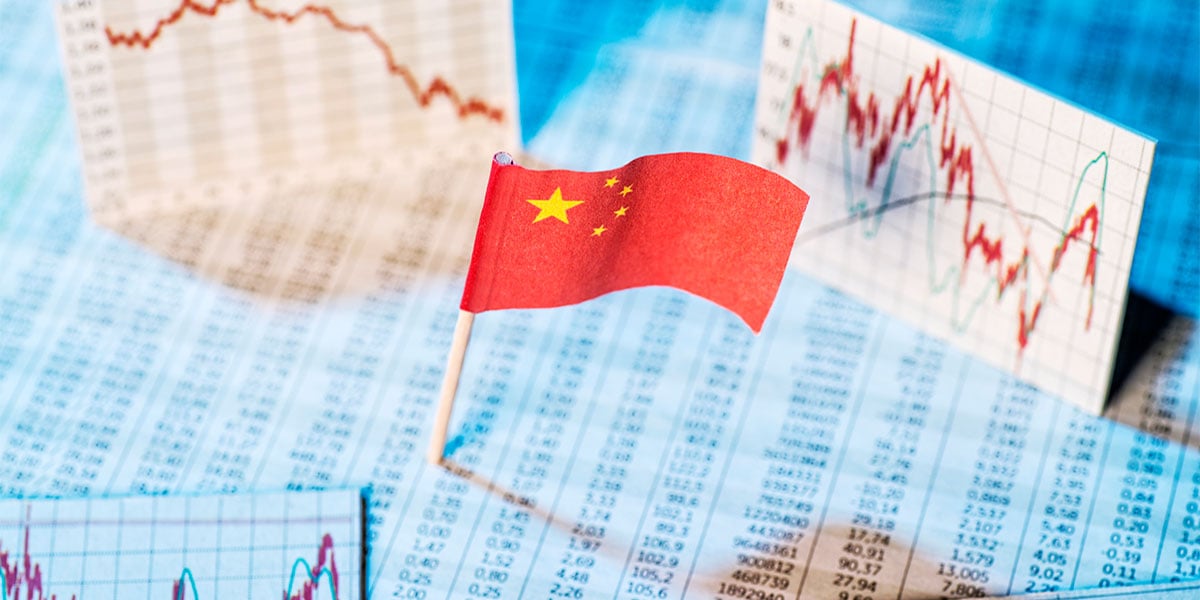Download the PDF

As the Chinese economy struggles to exit from the ravages of Covid, we consider the changes in the direction of the world’s second largest economy. What does it mean for Australia and the global economy? After almost two centuries of being a global economic backwater, the Chinese economy emerged from this historically atypical period with the shift from the socialist road to the capitalist road (now known as “socialism with Chinese characteristics) initiated by Deng Xiaoping in the late 1970s. As is typical of most developing economies, this road consisted of export-led growth as China took advantage of low wage costs to boost a low-value added manufacturing sector. This led to the offshoring of many manufacturing industries from the developed economies to China. This strategy was accompanied by the establishment of special economic zones designed to concentrate export-oriented manufacturing industries to develop economies of scale and scope. The strategy met with astonishing success and with China’s annual GDP growth averaging 10% in the roughly three decades from its implementation to just before the onset of the GFC. Over these decades, China re-established itself as a global economic powerhouse. But it also become integrated into the global economy via the demand and supply linkages of international trade. This reliance on global trade rendered the Chinese economy vulnerable to the collapse in global economic activity brought about by the GFC. Chinese authorities responded with a massive dose of government-backed spending that kept the economy growing at an average annual rate of 10% through 2009 to 2011; i.e., throughout the initial aftermath of the GFC and through the European debt crisis. During the GFC/European debt crisis, the Chinese government poured fiscal stimulus of around 7% of GDP into its economy. Another large dose, this time around 3% of GDP, was administered during the China equity market meltdown of 2015. Unlike most developed economies, the composition of the fiscal stimulus was not weighted heavily towards income support of the household sector (either through handouts or tax cuts). Rather, the stimulus came in the form of infrastructure spending on predominantly transport and buildings.
Why so? Because in China, relative to most developed economies, the household savings rate is extraordinarily high, meaning significant leakage of consumer-focused stimulus from the economy to savings. But as we know, the infrastructure-based stimulus strategy has not been without costs. Those costs have been overinvestment and overly indebted state-owned enterprises and local governments and a bubble, then collapse, of the property market. The next major economic challenge faced by Chinese policymakers was Covid. And here the government, surprisingly, did not roll out the usual playbook of enormous fiscal stimulus. Rather, the stimulus package during the height of the pandemic was muted at less than one percent of GDP. Even now, as the economy struggles to hold onto post-Covid gains, the stimulus measures are modest, remaining at less than one per cent of GDP. Nonetheless, the Chinese economy rebounded swiftly from the initial Covid hit as the global increase in demand for manufactured goods lifted export sales and propped up the economy. In particular, the export of high tech manufactured goods (e.g., batteries, EVs) has been important in supporting the Chinese recovery from the pandemic. What does this tell us about China going forward, what are the risks and are there opportunities? First, the large-scale infra-based stimulus measures are becoming a thing of the past. Their impact on debt, their diversion of resources from high value adding sectors and the risk they pose to entrenched imbalance in the property market means that they will be faded out. Second, government support will continue to favour the digital-tech sector rather than households. Why? From the government’s perspective the Chinese economy is in a delicate phase of its evolution. Chinese authorities are attempting to avoid the so-called middle income trap that has seen the inability of many emerging-market economies to make the leap from developing to developed status. The middle income trap occurs when a country, in the earlier phases of development, manages to rise to middle income status, but as a consequence, loses its labour-cost advantage in low value added manufacturing, but is unable to make to leap to compete with developed economies in high value-add markets. The growth of the digital-tech industry is therefore of key strategic importance to the Chinese who are determined to avoid the middle income trap.
What do we conclude from these changes? The pivot away from large fiscal stimulus packages will deprive the global economy of a strong counter cyclical offset to sharp slowdowns in global growth. For Australia, the impact of China infra stimulus was to drive up the price of iron ore and metallurgical coal, and hence, our terms of trade and economy. This shielded us from the global business cycle. We can expect a more volatile economy in its absence. The ongoing expansion of the Chinese digital-tech sector cannot be achieved through domestic demand alone. Even if the government were to shift fiscal stimulus towards the household sector, given high savings rates, the size of the stimulus required and the risk to ever higher levels of public debt would make such a strategy untenable. Hence, the Chinese digital-tech sector must remain export oriented. This brings China in direct economic conflict with the west, which is unwilling to relinquish leadership of the global digital-tech sector for reasons of national security. The changing shape of the Chinese economy presents at least two risks to the global economic outlook. First, the absence of China as a ballast to global economic downturns bodes for more volatile economic cycles and robs Australia of a key offset to global growth downturns that saw us go without a recession from 1991 to 2020. Second, China’s development of the digital-tech sector, a necessary move to avoid the middle income trap (at least in the minds of Chinese authorities) brings it in direct economic conflict with developed western economies; particularly the US. But China and the west are locked into interaction as the west needs China’s digital-tech exports and China needs the demand only the west can currently deliver. Hence, the global digital-tech sector will continue to be an economic battle ground between China and the west for years to come.

